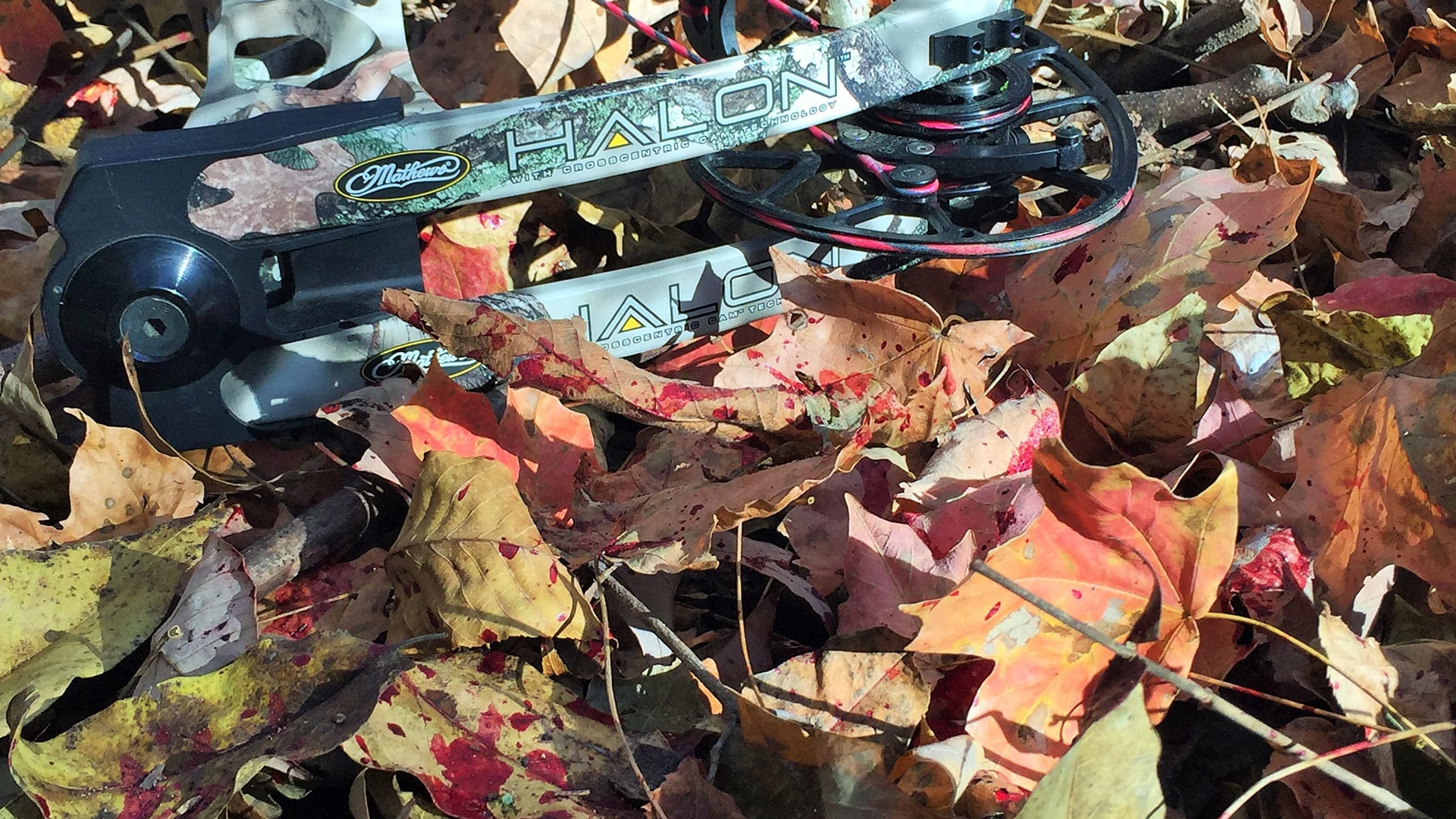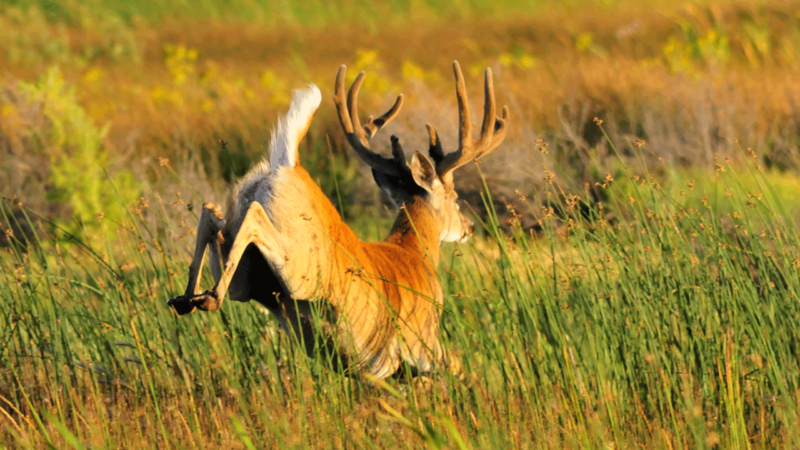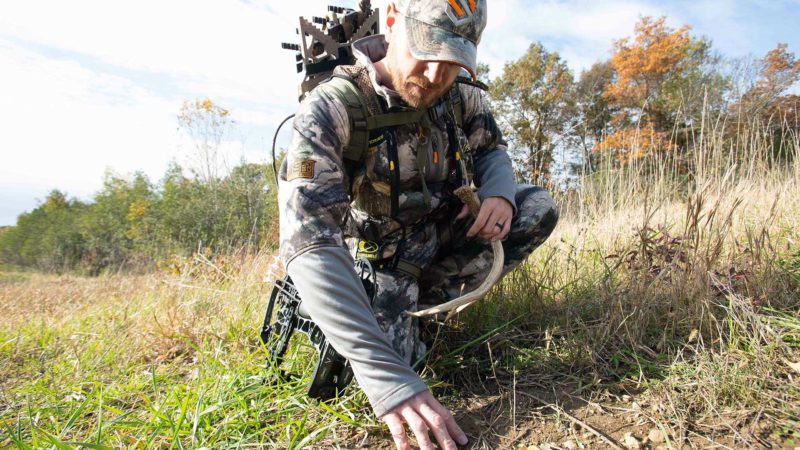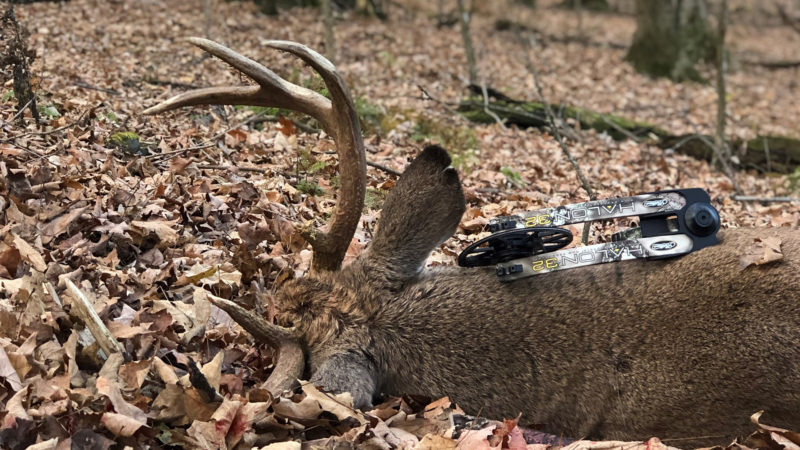You just let an arrow fly on a great buck. A few minutes later you call your buddies—sounding like a giddy little kid. Once the adrenaline subsides, the real work begins. If you do not see or hear your buck crash, you’ve got some blood trailing to do. There are many blood trailing mistakes that can cost you a deer if you aren’t careful. Dozens of factors come into play in deciding when and how to blood trail a deer.
The shot, and what you saw happen immediately after the shot, are great starting points to make your decision to trail right away, or back out. Once you are on a blood trail, numerous things can happen that will cause you to not find a deer. Lets take a look at some common mistakes, and what to avoid.

Starting Too Soon
One of the most common blood trailing mistakes can begin before you even take up the trail. Starting too soon. If you had a marginal to poor hit, back-out and give the deer some time. How much? It can vary depending on if you hit one lung, liver, or way back near the stomach and guts.
Deer can live a long time with a one lung hit, you could be waiting upwards of 4-6 hours or more. For liver or stomach, they can live even longer and you may have to wait 10-12 hours before beginning to track—and the deer may still be alive. It is always better to play things safe and avoid bumping the deer out of a bed if you think the hit was poor.
Knowing when to begin blood trailing could be dictated by weather as well. A warm early season evening will make an anxious hunter even more anxious to get in the woods and find their trophy to avoid spoiling meat. A rainstorm about to commence will also dictate your feelings as to when to begin trailing.
Also, pay attention to timing as it relates to still being able to take home some fresh venison. If you put a bad gut shot on a deer at 7:30pm, the deer may live until 4:00am or longer for example, giving you an opportunity to recover the deer and salvage the meat, if you track and find the deer at first light in the morning.
If you did not see or hear the deer crash, but the hit was great—give it a little time, sneak out of the tree and go recover the arrow (if possible) for more intel. If you didn’t see or hear the deer crash, but you have a great hit with a blood covered arrow, I would still give it at least 30 minutes to an hour before tracking. The deer is probably dead, but you just never know.

Moving Too Fast on the Trail
When beginning a blood trail on a marginally hit deer, go slow and with multiple people if possible. If you speak with experienced blood trailers or the owners of tracking dogs, they all say one of the most common mistakes is starting too soon, and then going way too fast while on the blood trail.
Search methodically, making sure to look on both sides of the trail including saplings and trees where a deer could’ve temporarily crashed. When you take up the blood trail, use quality lights with a high lumen rating. It is a good idea to always have a headlamp and a hand flashlight. If for some reason you need to look off the trail to the side for blood, your headlamp will illuminate your view and you can keep your hand light on the trail in front.
If you have the luxury of tracking with multiple people, have someone hang back and move slow near last blood if the trail gets sparse. It is tempting for a whole pack of hunters to walk shoulder to shoulder trailing sparse blood, but always have someone stay back in case the trail takes a turn and you need to continue in a different direction.
If you are by yourself, marking last blood with a backup flashlight, illuminated arrow nock or something visible can at least allow you to go ahead and grid search for more blood. If you don’t find more blood, at least you have marked last blood and can make a decision from there.

Thinking All Blood Is Equal
If you get a long ways down a blood trail on a deer, keep an eye out for hair and small chunks of meat that may have dropped. If you find your arrow some 300 yards into a track job and discover you had little penetration and the arrow is covered with brown and greenish blood with a bad odor—that is an indication of a gut shot and you need to back out and give the deer time.
A dark deep colored blood typically indicates a liver hit. Blood with small, oxygenated bubbles usually means a lung hit. A good hit producing bright red blood could mean you have a heart shot.
Being educated on the varieties of blood colorations and odors can make or break your recovery process. A slew of hair on a low or high hit deer could indicate that you grazed the deer. Your deer might survive on a grazed puncture wound, but don’t jump to conclusions, you owe the animal your best recovery effort.
Not Calling for a Tracking Dog
If you have exhausted all other options after losing blood and grid searching the area, it may be time to call in a tracking dog for a recovery. Tracking dogs have changed the blood trailing game and taken the recovery process to new heights in terms of success.
Highly trained pups in their prime have turned up some amazing deer recoveries for deer hunters who surely thought their deer was a lost cause. Tracking dogs are acutely aware of the interdigital scent of deer, which is a glad on a deer’s hoof. Tracking dogs can even stay on these trails after a rain.
When is a tracking dog appropriate? Before asking yourself these questions, you need to be sure your state and county allows the use of dogs for tracking wounded animals. Major whitetail states like Iowa do NOT allow dogs for tracking deer. If you ask me, this is silly. Anything within reasonable means that will increase percentages of finding deer is a win in my book.

Tracking dogs are typically quite busy during the rut and you might not always have one at your beck and call. Do your research ahead of time, and even make contact with a local tracker near you, introduce yourself so you understand his or her schedule with their dog so you can make arrangements should you need a dog tracker.
Dog trackers are gaining popularity for their great success in recovering deer. Keep them in mind for your next track job gone wrong.
Wrapping It Up
Everyone loves a great hit coupled with a small track job to increase suspense, but blood trailing can also be filled with disappointment and disgust if you check too many boxes on the ‘do-not’ list.
Many hunters have driven themselves out of the sport due to poor hits and bad track jobs.
Losing deer isn’t fun and certainly increases the chances of losing hunters in this great sport we enjoy. Take shots you feel confident in, and then take a moment to assess the scene and evaluate actions from that point before taking up the trail.

 By
By 



